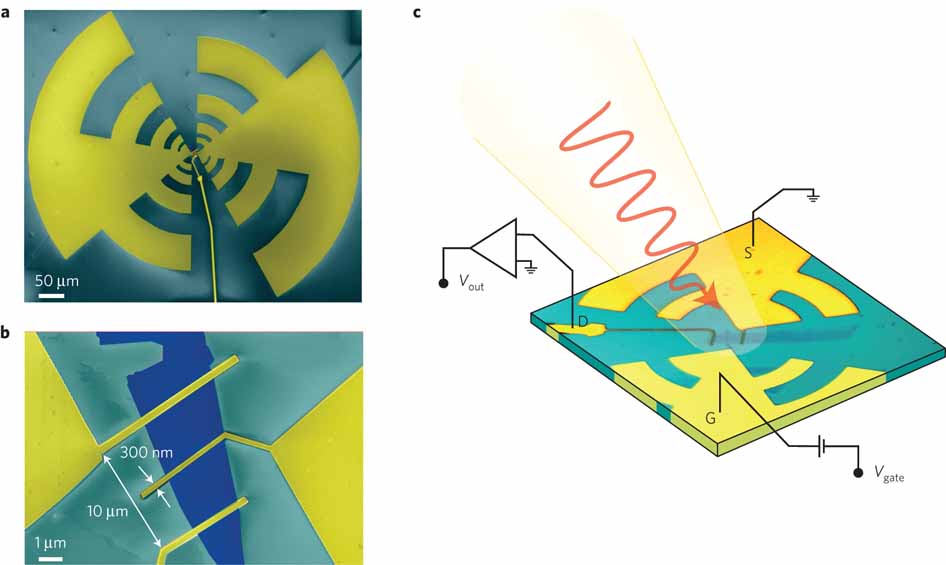THz components and systems
Developing and optimizing compact, tunable sources and detectors capable of operating at THz frequencies is one of today's major challenges in the field of electronic components. The concept of exciting plasma waves in FET-based nanodetectors enables us to develop new generations of efficient resonant or broadband THz sources and detectors based on new materials such as graphene or semiconductor nanowires. In addition, building on the speed records of InP-based bipolar transistor technology, innovative ultra-fast nanodetectors are currently under development.
By understanding in detail the mechanisms of the phenomena observed, we are maximizing the performance in terms of sensitivity, noise and speed of these nano-sensors designed to operate at room temperature. They are being evaluated for THz imaging and tomography, and for THz carrier telecommunication.
Graphene ballistic rectifier
A graphene ballistic rectifier is used in conjunction with an antenna to demonstrate a rectenna as a terahertz (THz) detector. A small-area (<1 μm2) local gate is used to adjust the Fermi level in the device to optimize the output while minimizing the impact on the cutoff frequency. The device operates in both n- and p-type transport regimes and shows a peak extrinsic responsivity of 764 V/W and a corresponding noise equivalent power of 34 pW Hz–1/2at room temperature with no indications of a cutoff frequency up to 0.45 THz. The device also demonstrates a linear response for more than 3 orders of magnitude of input power due to its zero threshold voltage, quadratic current–voltage characteristics and high saturation current. Finally, the device is used to take an image of an optically opaque object at 0.685 THz, demonstrating potential in both medical and security imaging applications.


- G. Auton, D. B. But, J. Zhang, E. Hill, D. Coquillat, C. Consejo, P. Nouvel,W. Knap, L. Varani, F. Teppe, J. Torres, and A. Song, Nano Lett. , 17, 11, 7015-7020 (2017)
- L. Vicarelli, M. S. Vitiello, D. Coquillat, A. Lombardo, A. C. Ferrari, W. Knap, M. Polini, V. Pellegrini & A. Tredicucci, Nature Materials 11, 865-871 (2012)